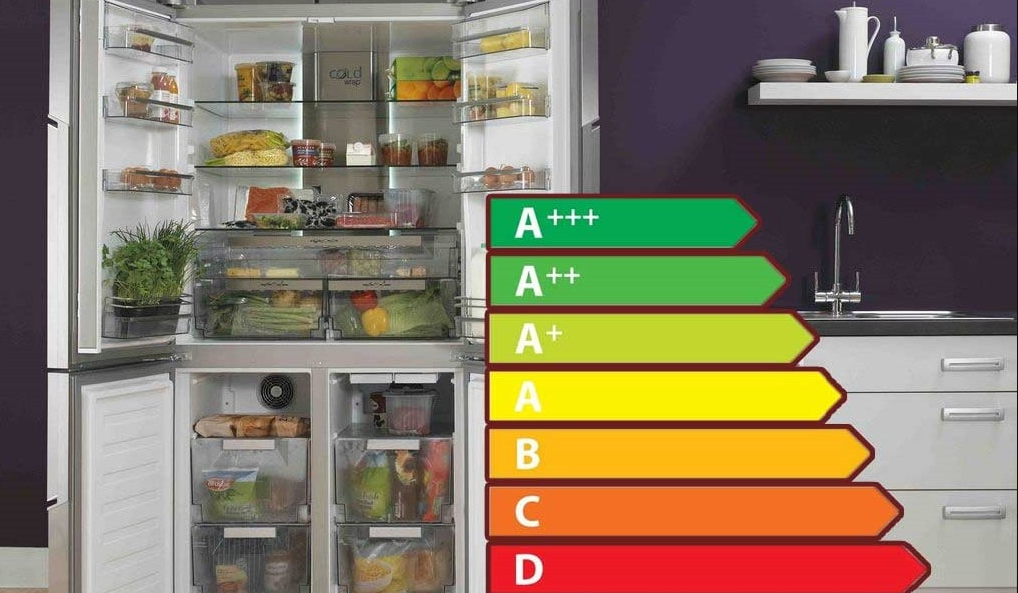Nowadays, energy saving is becoming more and more important, especially when it comes to household appliances that work around the clock. The refrigerator is one of the main consumers of electricity in the house, so its choice should be well-thought-out and justified. Modern refrigerators are equipped with various technologies aimed at reducing energy consumption, which not only helps to save money on energy bills, but also contributes to environmental protection.
The importance of energy saving when choosing a refrigerator
Energy efficiency is one of the key factors when choosing a refrigerator, as this household appliance operates around the clock, consuming a significant amount of electricity. The average power of a refrigerator varies by model, size and energy efficiency, but typically ranges from 100 to 400 watts. By knowing how much a refrigerator draws per hour, you can easily calculate its annual consumption. For example, if a refrigerator has a wattage of 150 watts, then:
Daily consumption
- 150 W * 24 hours = 3600 W/h or 3.6 kWh
Monthly consumption:
- 3.6 kWh * 30 days = 108 kWh
This means that such a refrigerator takes about 108 kWh of electricity per month.
How many kilowatts does a refrigerator draw
When choosing a refrigerator, it is important to understand how many kilowatts the refrigerator draws in order to assess its energy efficiency. Energy efficiency is labelled by classes, from A+++ (most efficient) to G (least efficient). The higher the grade, the less energy the appliance consumes. For example, an A+++ class refrigerator may consume about 150 kW per year, which is equivalent to about 12.5 kW per month. Compare this to a Class A fridge, which can consume around 300kW per year or 25kW per month. So, choosing a more energy efficient model can significantly reduce your energy costs.
How to calculate the power consumption of a refrigerator
To calculate exactly how many kW per month a refrigerator takes, you need to consider several factors:
- Energy efficiency: Refrigerators are labelled with energy efficiency classes from A+++ (most efficient) to G (least efficient). The higher the class, the less energy the appliance consumes.
- Size and volume: Larger refrigerators with larger freezer and refrigerator compartments consume more energy.
- Operating conditions: Ambient temperature and frequency of door opening also affect energy consumption.
- Technology: Having features such as No Frost, inverter compressor and other modern technologies can reduce energy consumption.
Examples of power consumption of refrigerators
Let’s look at a few examples of the power consumption of different classes of refrigerators:
- Class A+++ refrigerator: It consumes about 150-200 kW per year, equivalent to about 12-16 kW per month.
- Class A+ refrigerator: It consumes about 250-300 kW per year, equivalent to about 21-25 kW per month.
- Class B refrigerator: It consumes about 400-500 kW per year, equivalent to about 33-42 kW per month.
These examples show how significant the difference in energy consumption can be between models of different energy efficiency classes.
Real savings
Considering how much electricity prices have already skyrocketed and the continuing trend of rising prices, choosing and purchasing an energy-efficient refrigerator is the only real way to save money without lowering your standard of living. When the decision to buy a refrigerator is formed, how to choose among the many options is what becomes the main concern.
We propose to make a small comparative analysis between the simplest, standard refrigerator with average indicators and the popular Samsung inverter refrigerator. So, let’s take two models designed for an average family of 3-4 people: the standard refrigerator consumes about 1.2 kW per day, which is equivalent to 36 kW per month, while the inverter model consumes about 0.8 kW per day, which is about 24 kW per month. At the same time, the inverter model costs 3-5 thousand hryvnias more, but its approximate service life is up to 15 years, while a standard refrigerator usually lasts about 10 years. An inverter refrigerator has undeniable advantages in terms of both the duration of operation and energy consumption.
How to choose a refrigerator with minimum energy consumption
When choosing a refrigerator with minimum energy consumption, pay attention to the following parameters. Firstly, it is the energy efficiency class. Choose models with A++ or A+++ class to minimise energy consumption. Secondly, the size and volume of the refrigerator. Choose a refrigerator that suits your needs. A fridge that is too big will use more energy than you need. Third, technology. Look for models with an inverter compressor, which provides smooth power control and reduces energy consumption. The No Frost feature prevents ice build-up and reduces the load on the compressor. Fourth, additional features. Timers, sensors and intelligent control systems can help optimise the refrigerator’s performance and reduce energy consumption.
Choosing an energy-efficient refrigerator is an important step towards reducing energy costs and improving environmental sustainability. Understanding how many kW a refrigerator draws and what factors affect its power consumption will help you make an informed choice. Remember, modern technology and a high energy efficiency rating can significantly reduce your energy costs and extend the life of your refrigerator. Investing in a quality and energy-efficient refrigerator is an investment in your future well-being and environmental protection.
Experience the joy of saving money with reBITme when you buy a new energy-efficient refrigerator. Enjoy your choice!





